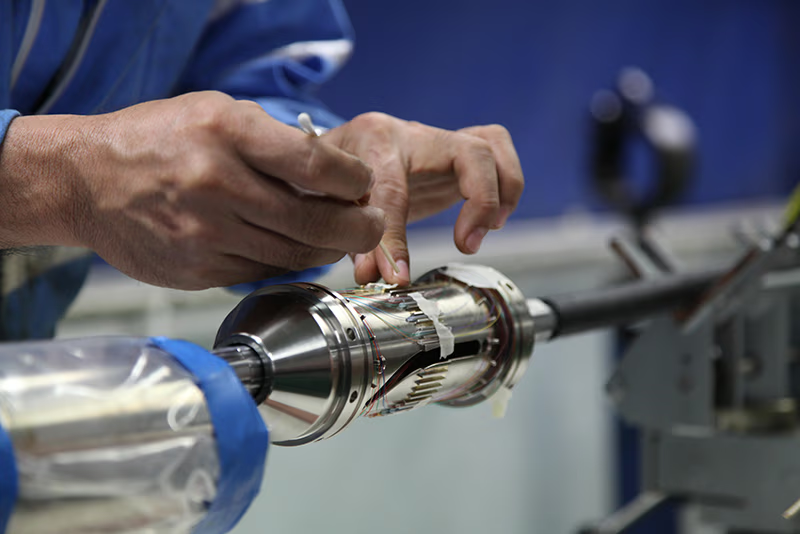
There are disturbances here and there, every so often. In this telling, they occur under the expanse of water separating Europe from the United States.
The cabling that we use to carry the Internet runs across the ocean floor, and into traffic nodes where land meets water. Each cable is delicate in its way, which is to say that although it is physically thick and precisely layered with protective materials, its oceanic scale makes it constantly susceptible to worldly damage.
So, when an anchor or an earthquake or something with teeth manages to find and cut a cable there is no easy way to make a reconnection: just a crew that sails out to sea with the tools of repair. To find the cut they send a pulse of light through the line until it reaches water. The precise duration of the light’s journey allows the crew to calculate where the breakage has happened. Once the ship arrives at the right place, the crew sink a steel claw down through several kilometres of seawater and bring the broken parts up to the surface. They can splice and adhere the cable’s glass core and outer shielding in about a day.
This is the difference between the way that the Internet seems to work and the way it actually works. The illusion is that one computer connects with the next, and passes data packets along some unseen thoroughfare. In reality, the Internet is sewn together by claws, glass and glue: a spider web of our own making.
We bury new cables alongside old ones. There are plans to sink a new one between Europe and the United States that will shave the speed of an Atlantic crossing down from 60 to 55 milliseconds. There was a similar saving between New York and Chicago when an inconveniently placed mountain was split in half and a cable buried in the gap. These accelerations are important to financial markets, and particularly to those groups that use computers to do their trading for them.
The workings of a computerised trade are complex by their own nature, but despite that, they are still explicable. The information that is sent between different computers is actually functioning as an exchange; one computer proposes a data packet, and swaps it for a corresponding packet. Imagine that each packet is small, so small that it can be swapped fast, and then imagine that there are a lot of swaps. This constant system of exchanges is what we understand to be the Internet.
The undersea cabling is there to cope with the totality of the exchanges, the swell and punch of every tiny swap combined. During the 1980s, the nascent Internet was composed of millions of swaps happening concurrently. By 1991, the tendency was for an exchange to swap packets by the billion. Today, it is more appropriate to think of them in trillions.
Futures contracts work in something of the same way, exchanges manage enormous numbers of simultaneous swaps. And essentially anything can be represented by a trade, so long as it’s packaged right.
Allowing electronic systems to step into the previously human role of deciding what gets bought and sold on an exchange is a relatively new idea, and it has produced a situation where the number of trades happening in a day has increased explosively. In any given hour during the early 80s, it might have been possible for one person to complete hundreds of trades, whereas now, a computer system can complete the same trades – and hundreds of millions more – in a matter of seconds. And, when new financial data is released to the market, a computer can make its own judgment about the data’s implications and value faster than a human can read through a word. For example, Thomson Reuters regularly releases economic data gathered by the University of Michigan to the public, and for a fee, traders can gain access to that information five minutes before the market at large. But, for an even higher fee, certain parties can get the data two seconds before the traders themselves.
Inside these two seconds, fortunes are made and lost. And they can become exponentially larger or smaller based on the millisecond-length pacing of an Internet packet swap. And thus, an undersea cable reveals its true value.
There are disturbances here and there, every so often. In 1987, Leo Melamed imagined a synthesis of science fiction and economics that he turned into Globex: the first electronic futures trading system. Some portion of the original fiction survived its transition to reality: in this invention, the journey between states and continents is measured in milliseconds, and planet Earth is compressed into a state of closeness. In this invention, it is entirely ordinary to make hundreds of millions of value judgments within two seconds. In this invention, we can imagine that the bonds between material and time are permanently repairable.